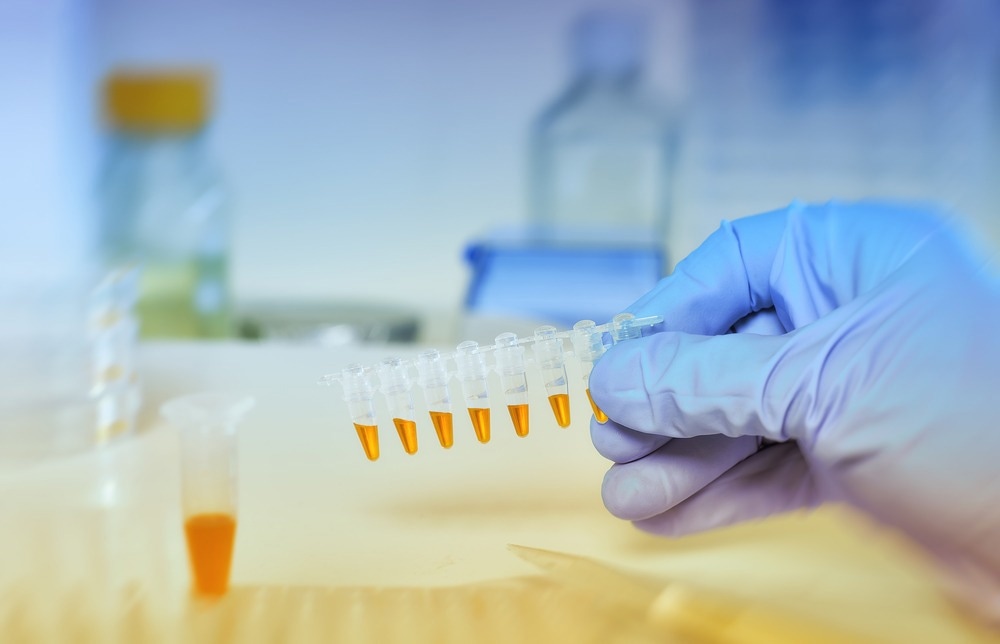We explore the cutting-edge technology behind biomarker detection. Learn more about how electrochemical biosensing offers scientists enhanced insight into these biological indicators.

Image Credit: tilialucida/Shutterstock.com
Introduction
Within the dynamic realm of modern healthcare, the timely and precise identification of biomarkers has taken on a pivotal role in disease diagnosis, therapeutic monitoring, and the delivery of comprehensive patient care. The advent of electrochemical biosensing has, without a doubt, revolutionized how we detect and quantify these vital biological indicators. Here, we delve into the captivating area of electrochemical biosensing and its profound impact on the healthcare landscape, specifically in biomarker detection.
Deciphering Biomarkers
Biomarkers, these distinctive molecules primarily comprised of proteins, nucleic acids, or small molecules, offer invaluable insights into the physiological state of an organism. They are pivotal in the diagnosis of diverse medical conditions, monitoring the progression of diseases, and assessing the effectiveness of therapeutic interventions. For instance, cancer biomarkers serve as sentinels in identifying malignant cells, while cardiac biomarkers are beacons signaling heart-related disorders.
The Need For Electrochemical Biosensing
Conventional techniques for biomarker detection, such as the enzyme-linked immunosorbent assay (ELISA) and polymerase chain reaction (PCR), undoubtedly bear merit in terms of reliability. Nevertheless, they are often burdened by extended turnaround times, substantial costs, and confinement to laboratory settings. Electrochemical biosensing effectively addresses these constraints by offering a rapid, cost-efficient, and portable alternative.
The electrochemical sensor stands out as the most widely employed biosensor for analytical purposes. This sensor type offers numerous advantages in the realm of biomaterial detection, primarily by assessing electrochemical properties that manifest based on the unique characteristics of the target substance, which selectively interacts with the bioreceptor.
Consequently, this streamlined approach simplifies sample preparation, allowing it to feasibly detect minute quantities of the target material, even within intricate samples. Furthermore, it is frequently integrated with processes like antigen-antibody reactions or nucleic acid interactions to heighten the selectivity and sensitivity of the target substance.
One of the noteworthy attributes of electrochemical sensors is their straightforward analytical methodology, coupled with exceptional performance, all achieved at a relatively low production cost. Additionally, their potential for miniaturization represents a significant advantage in portability and practicality. Generally, electrochemical sensors function as signal transducers, and they can be categorized into impedance sensors, current sensors, or voltage sensors based on the transducer employed.
What is a Biomarker?
Video Credit: The Washington Post/YouTube.com
The Mechanisms of Electrochemical Biosensing
At the core of electrochemical biosensors lie three indispensable components:
- Recognition Element: This critical element, frequently a biomolecule such as an antibody, aptamer, or enzyme, demonstrates exceptional specificity for the target biomarker. It forges a highly specific interaction with the biomarker of interest.
- Transducer: The transducer, operating through processes like amperometry or potentiometry, serves as the linchpin for translating the biochemical signal engendered by the recognition element into an electrical signal.
- Detector/Readout System: The electrical signal thus generated undergoes meticulous measurement and analysis via a detector or readout system, ultimately yielding a quantifiable outcome.
Versatile Applications of Electrochemical Biosensing in Biomarker Identification
Disease Diagnosis and Progressive Disease Monitoring
Electrochemical biosensors exhibit a remarkable aptitude for detecting specific biomarkers associated with various ailments, ranging from cancer and diabetes to infectious diseases. For instance, they offer a reliable means of screening for prostate-specific antigen (PSA) as part of prostate cancer assessment.
Furthermore, electrochemical biosensors empower healthcare practitioners to closely track disease advancement by permitting the continuous, real-time monitoring of biomarkers, enabling the tailoring of therapeutic strategies.
Point-of-Care Testing
In point-of-care testing (POCT), electrochemical biosensors have assumed a pivotal role. Portable, user-friendly, and endowed with rapid result generation, they find themselves ideally suited for settings where instantaneous decision-making proves critical.
Challenges for Biosensing of Biomarkers
Notwithstanding the substantial strides achieved in electrochemical biosensing, challenges persist. Ensuring the stability and selectivity of recognition elements, elevating the sensitivity of transducers, and broadening the spectrum of detectable biomarkers remain active focal points for ongoing research and development endeavors.
With advancements in nanotechnology, materials science, and artificial intelligence on the horizon, we anticipate the emergence of even more sensitive and versatile biosensors. Such innovations hold the promise of reshaping personalized medicine, enabling more robust early detection and precise treatment of diseases with an unprecedented level of precision.
Electrochemical biosensing has emerged as a transformative force within the healthcare domain. By presenting a swift, cost-effective, and portable alternative for biomarker detection, these biosensors are propelling us into a future where the early identification and monitoring of diseases are more accessible than ever before. As technology continues its relentless evolution, the realm of electrochemical biosensing stands poised to catalyze a monumental shift in healthcare, ushering in a new era of diagnostic precision and patient care.
References and Further Reading
Grieshaber D, MacKenzie R, Vörös J, Reimhult E. Electrochemical Biosensors - Sensor Principles and Architectures. Sensors [Internet]. 2008 Mar 7;8(3):1400–58. Available from: https://www.ncbi.nlm.nih.gov/pmc/articles/PMC3663003/
Jae Hyun Kim, Yu Jin Suh, Park D, Yim H, Kim H, Hye Jin Kim, et al. Technological advances in electrochemical biosensors for the detection of disease biomarkers. 2021 Aug 27;11(4):309–34.
Kaviraj A, Unlu E, Gupta A, El Nemr A. Biomarkers of Environmental Pollutants. BioMed Research International [Internet]. 2014;2014:806598. Available from
da Silva ETSG, Souto DEP, Barragan JTC, de F. Giarola J, de Moraes ACM, Kubota LT. Electrochemical Biosensors in Point-of-Care Devices: Recent Advances and Future Trends. ChemElectroChem. 2017 Feb 8;4(4):778–94.
Islam MdS, Sazawa K, Sugawara K, Kuramitz H. Electrochemical Biosensor for Evaluation of Environmental Pollutants Toxicity. Environments. 2023 Apr 6;10(4):63.
Gavrilaș S, Ursachi CȘ, Perța-Crișan S, Munteanu FD. Recent Trends in Biosensors for Environmental Quality Monitoring. Sensors. 2022 Feb 15;22(4):1513.
Yunus G, Singh R, Sindhu R, Kuddus M. Electrochemical biosensors in healthcare services: bibliometric analysis and recent developments. PeerJ [Internet]. 2023 Jun 27 [cited 2023 Oct 2];11:e15566–6. Available from: https://www.ncbi.nlm.nih.gov/pmc/articles/PMC10312160/
Disclaimer: The views expressed here are those of the author expressed in their private capacity and do not necessarily represent the views of AZoM.com Limited T/A AZoNetwork the owner and operator of this website. This disclaimer forms part of the Terms and conditions of use of this website.